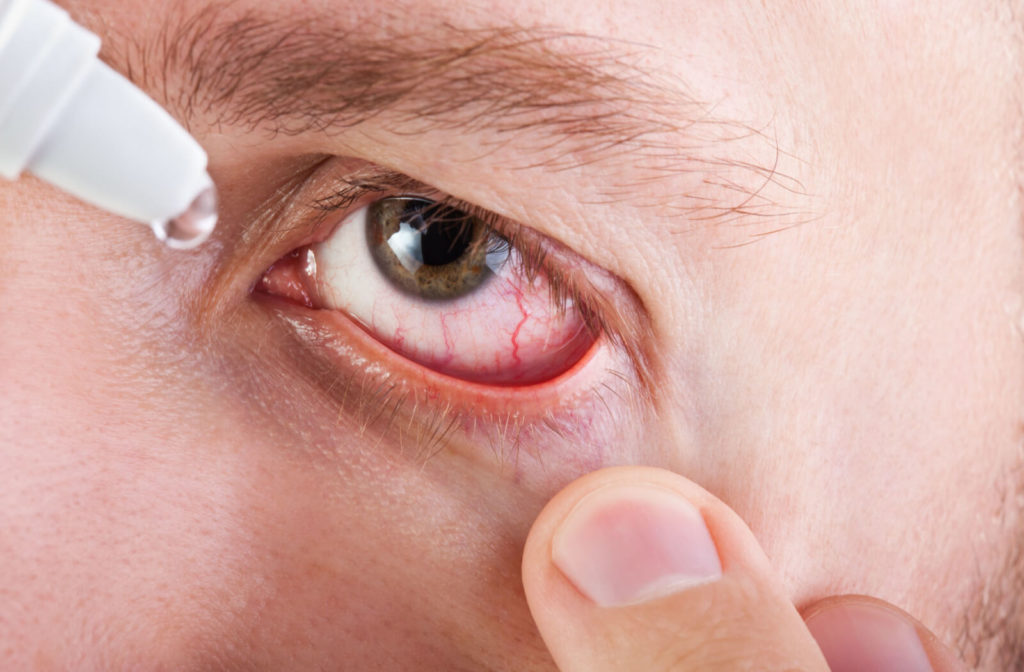Eye Care Essentials: Understanding the Difference Between Contact Lens Solution and Eye Drops
Maintaining healthy eyes is crucial for optimal vision and overall well-being. For contact lens wearers, both contact lens solution and eye drops play essential roles in eye care. However, it’s important to understand the distinct purposes of each and avoid using them interchangeably. This article delves into the differences between contact lens solution and eye drops, exploring their functionalities and guiding you towards appropriate eye care practices.
Demystifying the Solutions: Contact Lens Solutions Explained
Contact lens solutions are multi-purpose disinfecting solutions formulated specifically for cleaning, rinsing, storing, and lubricating soft contact lenses. Here’s a breakdown of their key functions:
- Cleaning: Contact lens solutions remove debris, protein buildup, and microorganisms that accumulate on lenses throughout the day.
- Disinfecting: These solutions kill bacteria and fungi that can cause eye infections.
- Rinsing: Rinsing removes cleaning solution residue and ensures lenses are comfortable to wear.
- Lubricating: Some solutions contain mild lubricants to enhance lens comfort during wear.
Important Note: Always follow the instructions provided by your eye doctor and the contact lens solution manufacturer for proper cleaning, rinsing, and storage of your lenses. Different solutions have varying usage guidelines.
Addressing Dryness and Discomfort: The World of Eye Drops
Eye drops come in various formulations to address specific eye concerns. Here’s a look at some common types of eye drops:
- Lubricating Eye Drops: These drops are formulated to relieve dryness and irritation caused by factors like dry eye syndrome, computer use, or environmental conditions. They often contain lubricants like artificial tears to mimic the natural tears produced by your eyes.
- Redness Relief Eye Drops: These drops contain vasoconstrictors that temporarily constrict blood vessels in the whites of your eyes, reducing redness. However, frequent use can lead to rebound redness, so consult your doctor for appropriate use.
- Allergy Eye Drops: These drops contain antihistamines or mast cell stabilizers to combat allergic reactions that cause itching, redness, and watering of the eyes.
- Antibiotic Eye Drops: These prescription drops are used to treat bacterial infections of the eye. Never use leftover antibiotic eye drops or share them with others, as this can promote antibiotic resistance.
Remember: Always consult your eye doctor before using any type of eye drops, especially if you have any underlying eye conditions. They can recommend the appropriate type of eye drops for your specific needs.
Safety First: Why Contact Lens Solution Isn’t a Substitute for Eye Drops
While both contact lens solutions and eye drops are liquid solutions intended for eye care, their functionalities differ significantly. Here’s why using contact lens solution as eye drops can be detrimental:
- Harsh Ingredients: Contact lens solutions contain disinfectants and preservatives that can irritate the delicate tissues of the eye. These ingredients are not meant for direct contact with the eye and can cause stinging, burning, and redness.
- Ineffective for Dryness: Contact lens solutions are not formulated to address dryness. They might contain minimal lubricants, but these aren’t sufficient to provide lasting relief for dry eyes.
- Potential for Infection: Improper storage or use of contact lens solution can increase the risk of bacterial contamination. Using contaminated solution in your eyes can lead to eye infections.
The Right Tool for the Job: Choosing the Best Eye Care Products
Here’s a quick guide to choosing the appropriate eye care products:
- For Cleaning and Storing Contact Lenses: Use a multi-purpose contact lens solution recommended by your eye doctor.
- For Dry or Irritated Eyes: Opt for lubricating eye drops formulated for dry eye relief. Consult your doctor for recommendations.
- For Eye Allergies or Redness: Use eye drops specifically designed for allergy relief or redness reduction, following your doctor’s instructions.
FAQ: Navigating the World of Eye Care Solutions
Q: Can I use saline solution as eye drops?
A: While sterile saline solution can be used for rinsing contact lenses or flushing out a foreign object from the eye in an emergency, it’s not a substitute for lubricating eye drops. Saline solution won’t provide lasting relief for dry eyes.
Q: My eyes are red and itchy. What kind of eye drops should I use?
A: Redness and itching can be symptoms of allergies. Consult your doctor for a diagnosis and to determine the right type of eye drops, such as allergy eye drops.
Q: How often can I use lubricating eye drops?
A: The frequency of using lubricating eye drops depends on the severity of your dryness and the specific product.

